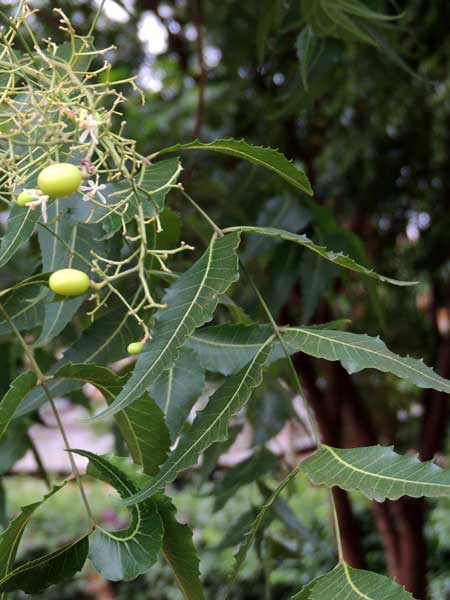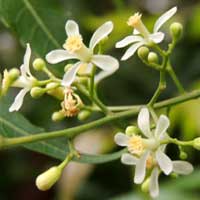Neem
Azadirachta indica

Photographed in Moshi, Tanzania, Dec 29, 2013.

From Wikipedia:
Neem is a fast-growing tree that can reach a height of 15–20 metres (49–66 ft),
rarely to 35–40 m native to tropical Asia, but has been widely planted in Kenya. It is evergreen, but in severe drought it
may shed most or nearly all of its leaves. The branches are wide and spreading.
The fairly dense crown is roundish and may reach a diameter of 15–20 metres
in old, free-standing specimens. The neem tree is very similar in
appearance to its relative, the Chinaberry (Melia azedarach).
The opposite,
pinnate leaves are 20–40 cm long, with 20 to 31 medium
to dark green, serrate leaflets about 3–8 cm long. The terminal
leaflet is often missing. The petioles are short.
The white and fragrant
flowers are arranged in more-or-less drooping axillary panicles which are up to
25 cm long. The inflorescences, which branch up to the third
degree, bear from 150 to 250 flowers. An individual flower is 5–6 mm
long and 8–11 mm wide. Protandrous,
bisexual flowers and male flowers exist on the same individual tree.
The fruit
is a smooth (glabrous) olive-like drupe which varies in shape from elongate
oval to nearly roundish, and when ripe is 1.4–2.8 cm by
1.0–1.5 cm. The fruit skin (exocarp) is thin and the
bitter-sweet pulp (mesocarp) is yellowish-white and very fibrous. The mesocarp
is 0.3–0.5 cm thick. The white, hard inner shell
(endocarp) of the fruit encloses one, rarely two or three, elongated seeds
(kernels) having a brown seed coat.